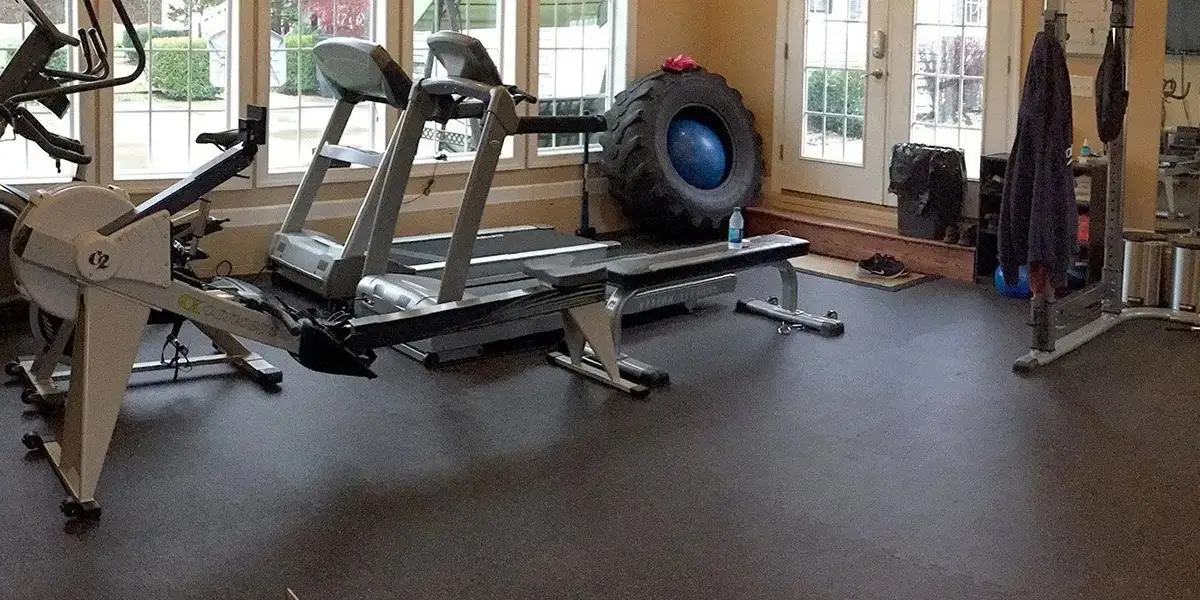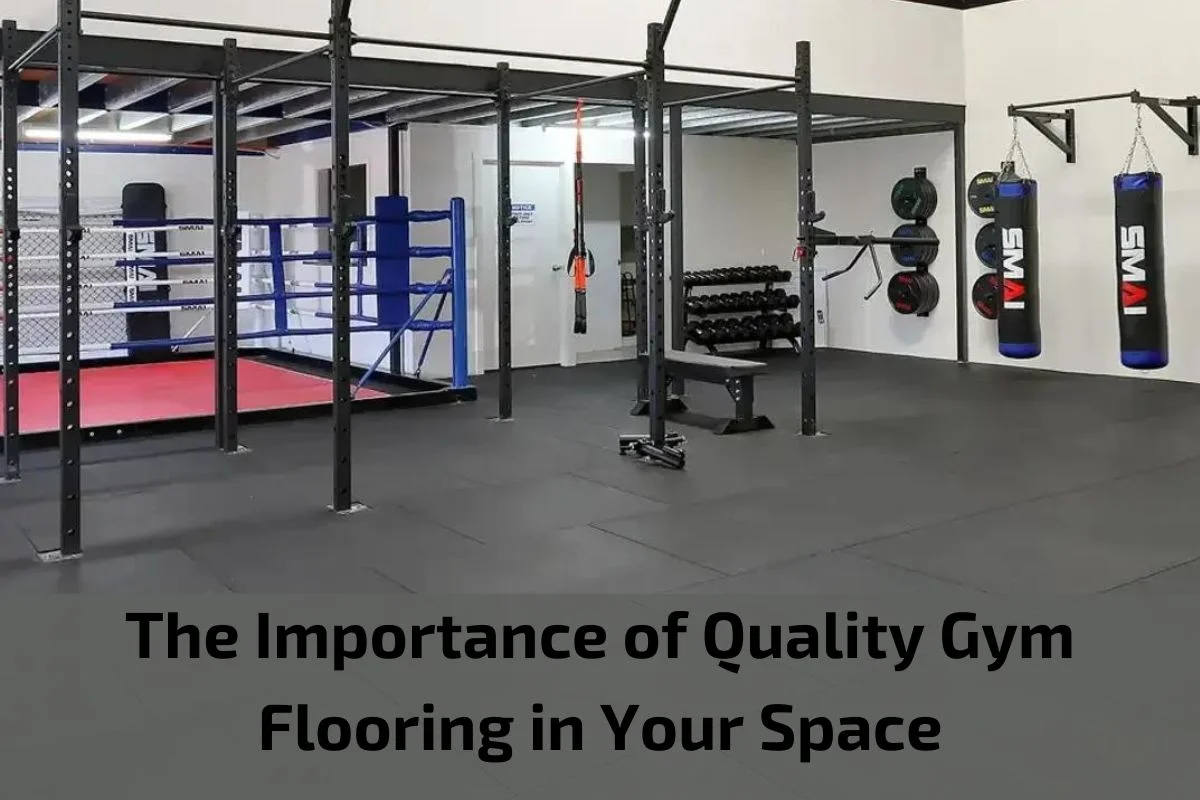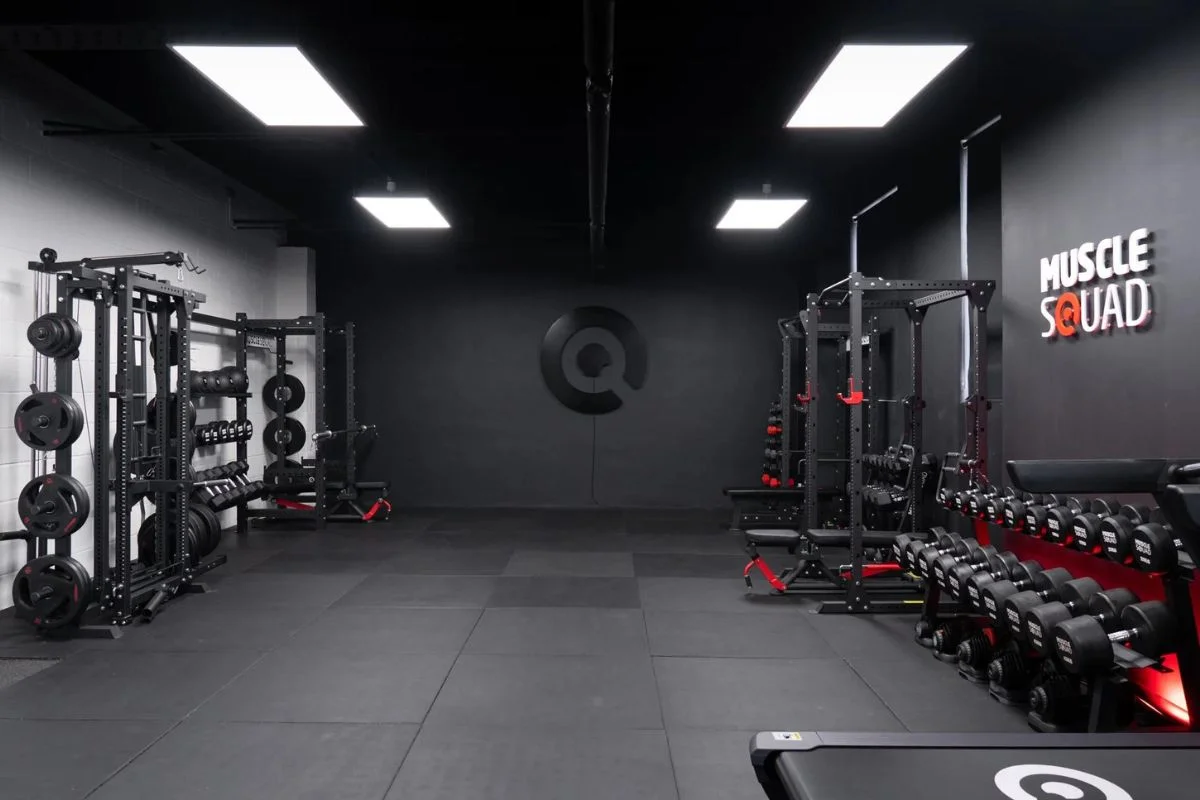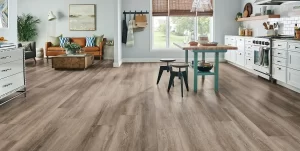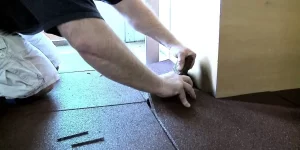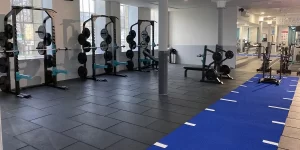Quality gym flooring serves as the solid foundation upon which every successful fitness journey is built. While it may often go unnoticed amidst the clanging of weights and the rhythm of cardio machines, the significance of quality flooring in a gym space cannot be overstated. It forms the bedrock of safety, performance, and longevity, offering a multitude of benefits that extend far beyond mere aesthetics.
In the bustling hub of a gym, where athletes and enthusiasts alike converge to pursue their fitness goals, the importance of quality flooring becomes unmistakably clear. It is the silent guardian that absorbs the impact of every footfall, cushions the weight of every lift, and provides the stability needed for each movement. Without it, the very essence of a safe and conducive workout environment would be compromised.
Importance of Choosing the Right Gym Flooring for Safety
Ensuring the safety of gym-goers should be a top priority for any fitness facility. Among the myriad of factors that contribute to a safe workout environment, the choice of gym flooring stands out as one of the most crucial. Here’s why selecting the right gym flooring is paramount for ensuring safety:
- Impact Absorption: Quality gym flooring is designed to absorb the impact of heavy weights, equipment, and vigorous movements. This helps reduce the stress on joints and muscles, minimizing the risk of impact-related injuries such as strains, sprains, and fractures.
- Slip Resistance: Slippery surfaces pose a significant hazard in gyms, especially in areas where moisture and sweat are prevalent. The right gym flooring material offers excellent traction, reducing the likelihood of slips and falls during workouts, even in high-moisture environments.
- Shock Absorption: Intense workouts involving jumping, running, and plyometric exercises can exert significant force on the body. Proper gym flooring with shock-absorbing properties cushions these impacts, protecting joints and preventing long-term wear and tear on the body.
- Stability and Balance: A stable and level surface is essential for maintaining balance and stability during exercises like weightlifting, yoga, and functional training. Quality gym flooring provides a firm foundation, allowing users to perform movements with confidence and precision.
- Versatility: Different areas of the gym may require specific flooring solutions based on the activities performed. From free weight zones to cardio areas and functional training spaces, selecting versatile flooring options ensures that each area is optimized for safety and performance.
- Hygiene and Cleanliness: Hygiene is paramount in any fitness environment, particularly in shared workout spaces. Easy-to-clean gym flooring materials resist moisture, bacteria, and odors, promoting a clean and sanitary environment that reduces the risk of infections and illnesses.
- Long-Term Durability: Investing in high-quality gym flooring pays off in the long run by minimizing the need for frequent repairs and replacements. Durable flooring materials withstand heavy foot traffic, equipment movement, and regular wear and tear, ensuring long-term safety and functionality.
- Compliance with Regulations: Many jurisdictions have specific safety regulations and standards governing gym facilities, including requirements for flooring materials. Choosing the right gym flooring ensures compliance with these regulations, mitigating potential liabilities and ensuring the well-being of gym users.
Types of Gym Flooring Materials
Choosing the appropriate gym flooring material is essential for creating a safe, comfortable, and functional workout space. Various types of flooring materials are available, each offering unique features and benefits tailored to different gym environments and activities. Here are some common types of gym flooring materials:
Rubber Flooring:
- Benefits: a. Excellent shock absorption properties, reducing impact on joints and equipment. b. Slip-resistant surface, enhancing safety during workouts. c. Durable and long-lasting, capable of withstanding heavy foot traffic and equipment use. d. Sound-absorbing qualities, minimizing noise in the gym environment.
- Applications: a. Weightlifting areas b. CrossFit and functional training zones c. Cardio areas d. Group exercise studios
Vinyl Flooring:
- Advantages: a. Wide range of colors, patterns, and textures, allowing for customization and design flexibility. b. Easy to clean and maintain, resisting stains, moisture, and bacteria. c. Slip-resistant surface, providing stability and safety during workouts. d. Affordable option for gym owners on a budget.
- Considerations: a. May not offer as much cushioning as rubber flooring, requiring additional padding for high-impact activities.
Foam Flooring:
- Versatility: a. Lightweight and portable, making it ideal for temporary or home gym setups. b. Soft and cushioned surface, suitable for yoga, Pilates, and stretching exercises. c. Interlocking design allows for easy installation and customization.
- Considerations: a. Less durable than rubber or vinyl flooring, prone to indentations and wear over time. b. Not recommended for heavy equipment or high-impact activities.
Hardwood Flooring:
- Aesthetic Appeal: a. Classic and elegant appearance, enhancing the visual appeal of the gym space. b. Suitable for multipurpose use, including dance studios and group exercise areas. c. Provides a firm and stable surface for activities like aerobics and dance.
- Maintenance: a. Requires regular maintenance, including refinishing and sealing to preserve appearance and durability. b. Susceptible to scratches, dents, and moisture damage if not properly cared for.
Other Materials:
- Carpet Tiles: Offer comfort and noise reduction but may not be suitable for heavy equipment or high-traffic areas.
- Artificial Turf: Ideal for outdoor or indoor turf training areas, providing a durable and low-maintenance surface for agility drills and sports activities
Factors to Consider When Choosing Gym Flooring
Selecting the right gym flooring involves careful consideration of various factors to ensure that the chosen material meets the specific needs and requirements of the fitness facility. Here are key factors to consider when choosing gym flooring:
Budget Considerations:
- Determine the allocated budget for gym flooring materials and installation.
- Explore cost-effective options that provide durability and performance without exceeding budget constraints.
- Consider long-term savings and investment value in relation to the lifespan and maintenance requirements of the chosen flooring material.
Safety Features:
- Prioritize safety by selecting flooring materials with excellent slip resistance to prevent accidents and injuries.
- Choose flooring with adequate shock absorption properties to reduce impact on joints and equipment during workouts.
- Consider flooring options that meet safety standards and regulations applicable to gym environments.
Maintenance Requirements:
- Evaluate the ease of cleaning and maintenance for different types of flooring materials.
- Choose flooring that is resistant to stains, moisture, and bacteria growth to ensure hygienic conditions in the gym.
- Consider long-term maintenance costs and time investment associated with maintaining the chosen flooring material.
Gym Activities:
- Assess the types of activities and exercises performed in different areas of the gym.
- Select flooring materials that offer suitable traction, cushioning, and durability for specific workout routines and equipment usage.
- Consider the impact resistance and load-bearing capacity of flooring materials to accommodate heavy equipment and free weights.
Aesthetic Preferences:
- Consider the overall design and ambiance of the gym space when choosing flooring materials.
- Explore options for customization, such as color, pattern, and texture, to enhance the visual appeal of the gym environment.
- Ensure that the chosen flooring complements the existing decor and branding of the fitness facility.
Environmental Impact:
- Explore eco-friendly flooring options made from sustainable materials and manufacturing processes.
- Consider the recyclability and environmental footprint of different flooring materials to minimize ecological impact.
- Choose flooring materials that promote indoor air quality and contribute to a healthier environment for gym patrons and staff
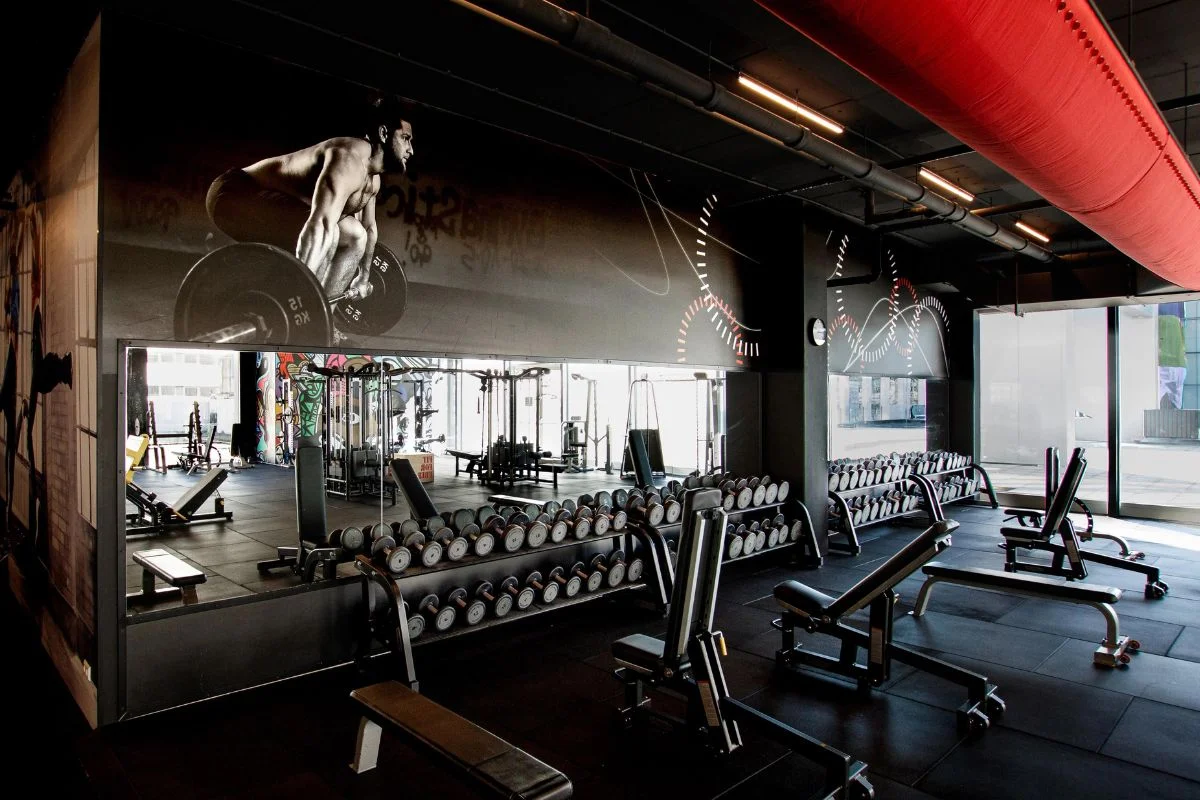
Tips for Installing and Maintaining Gym Flooring
Installing and maintaining gym flooring is essential for ensuring a safe, functional, and attractive workout environment. Here are some tips to help with the installation and maintenance of gym flooring:
Pre-installation Preparation:
- Thoroughly clean and prepare the subfloor to ensure a smooth and level surface for installation.
- Address any existing moisture issues or structural deficiencies that may affect the performance and durability of the flooring material.
- Allow adequate time for acclimatization of the flooring material to the gym environment to prevent warping or expansion post-installation.
Proper Installation Techniques:
- Follow manufacturer guidelines and recommendations for installing the chosen flooring material.
- Use appropriate adhesives, underlayment’s, and installation tools to ensure proper bonding and alignment of flooring components.
- Consider hiring professional installers with experience in installing gym flooring materials for optimal results and longevity.
Maintenance Best Practices:
- Establish a regular cleaning schedule to remove dirt, debris, and sweat buildup from the gym flooring.
- Use mild, non-abrasive cleaners and disinfectants suitable for the specific flooring material to avoid damage or discoloration.
- Promptly address spills and stains to prevent permanent damage and maintain the appearance of the flooring surface.
- Inspect the flooring regularly for signs of wear, damage, or loose edges, and address any issues promptly to prevent safety hazards.
- Implement protective measures such as floor mats and equipment pads to minimize wear and tear on high-traffic areas and heavy-use equipment zones.
- Consider applying sealants or protective coatings to enhance the durability and longevity of the gym flooring material.
- Train gym staff on proper cleaning and maintenance procedures to ensure consistent upkeep of the flooring surface.
Repairs and Upkeep:
- Have a designated maintenance team or contractor available to address repairs and maintenance tasks as needed.
- Keep spare flooring tiles or materials on hand to facilitate quick and seamless repairs for damaged or worn-out sections.
- Follow manufacturer recommendations for repairing and replacing damaged flooring components to maintain warranty coverage and performance standards.
- Monitor and document maintenance activities and repairs to track the condition and lifespan of the gym flooring over time
Conclusion
In conclusion, the choice of gym flooring is a critical decision that significantly impacts the safety, functionality, and aesthetics of a fitness facility. By prioritizing factors such as safety features, maintenance requirements, budget considerations, and environmental sustainability, gym owners can select the most suitable flooring material to meet the unique needs of their space.

